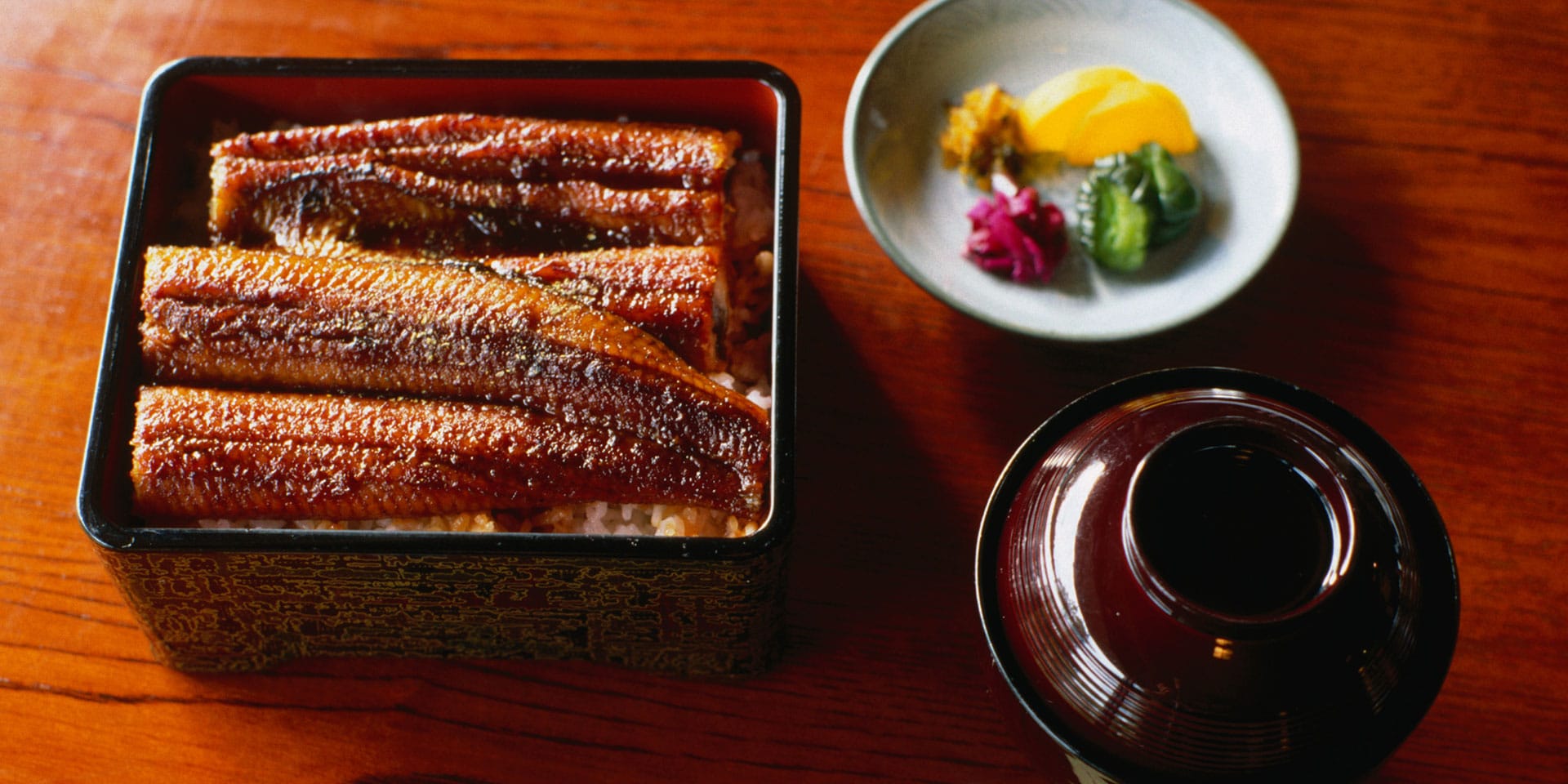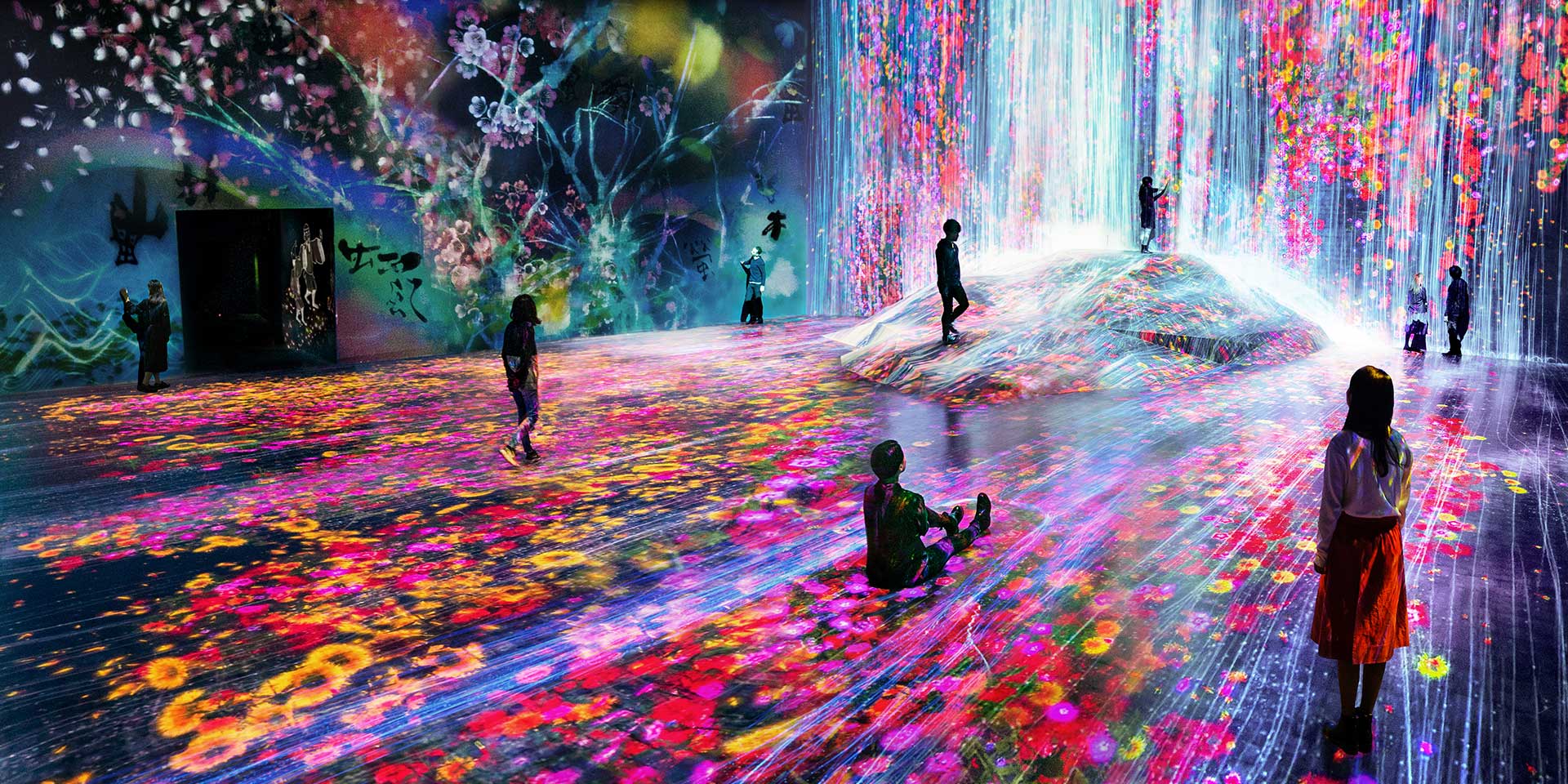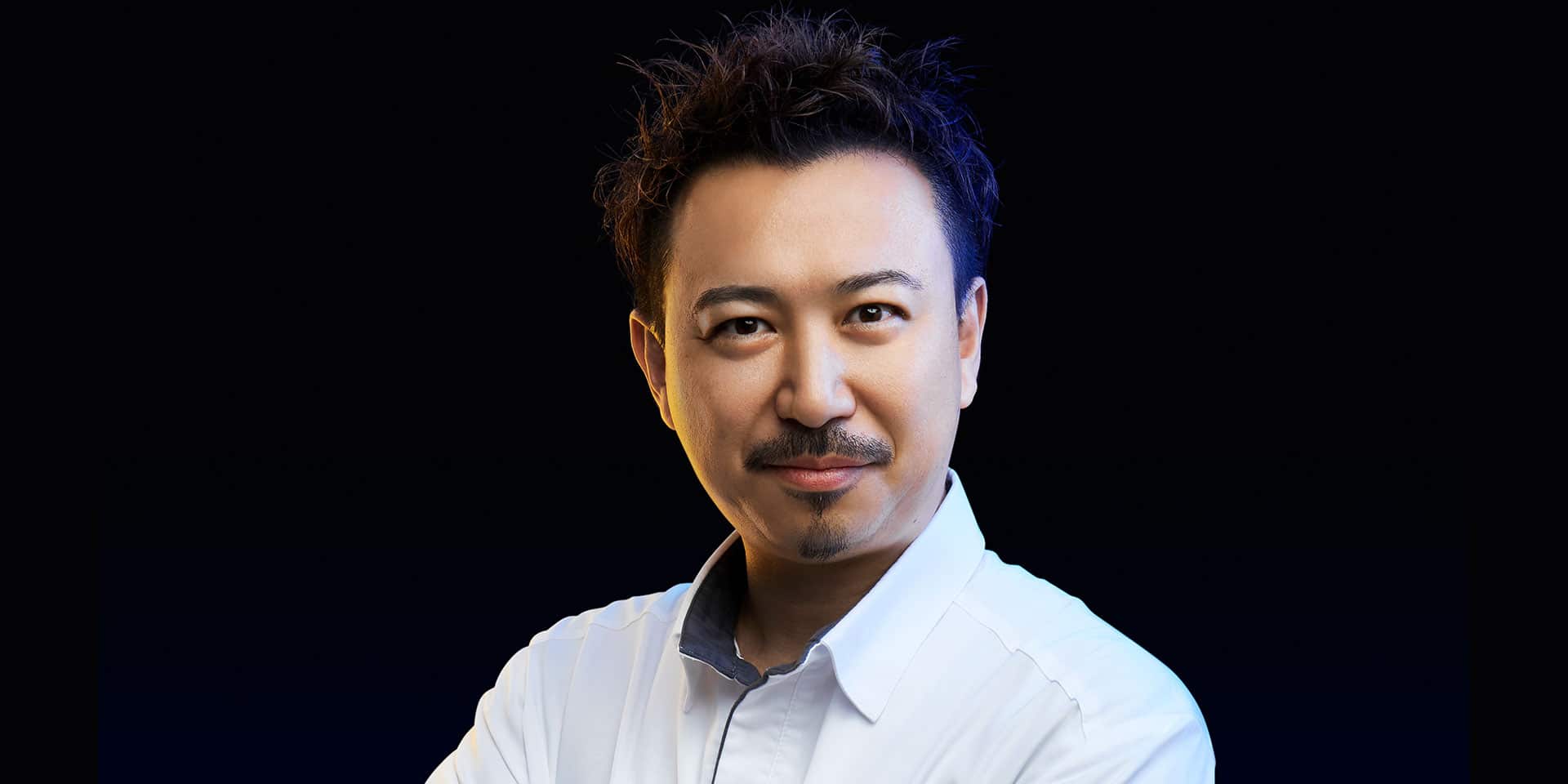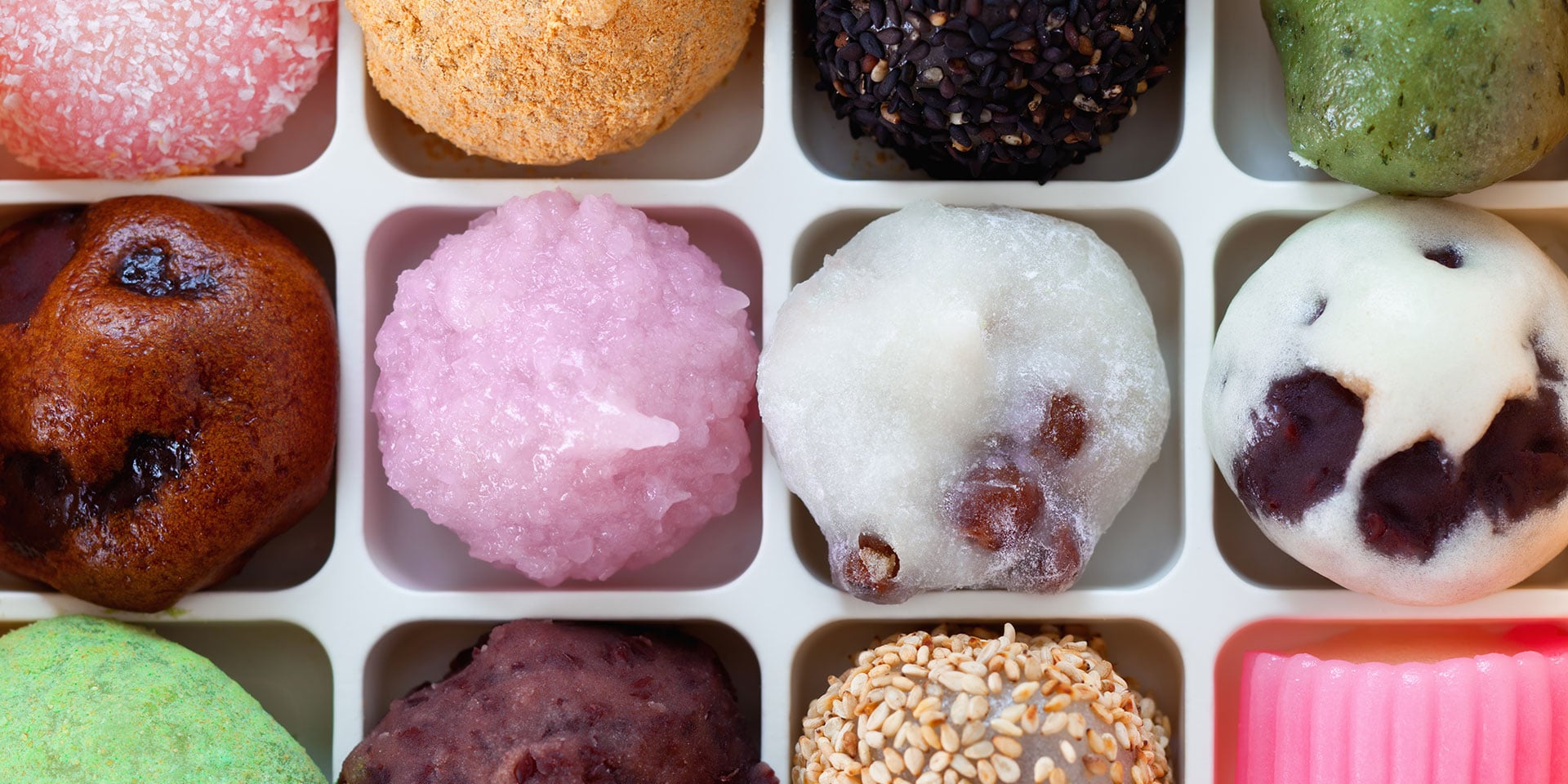
Dazzle your taste buds at one of Tokyo’s most famous unagi restaurants. (Photo: Getty Images)
TokyoReel in the Eel: On the Trail of Unagi in Tokyo
By Joji SakuraiIt was the smell that drew me first. A tangy smoke that cut through car fumes, sweet torture as I approached the end of my long Tokyo run. The place, beneath a noisy overpass, didn’t look like much. In fact, it was less than ordinary, even a little scruffy—a two-story house sandwiched between apartment blocks. But something made me linger; something touching, proud.
The way its squat eaves seemed to put up with the indignity of a concrete canopy and taller, newer neighbors. How its faded bricks reminded me of the home where my mother grew up. And then there was that savory-sweet smoke that made my taste buds water. I snapped a photo of the unagi restaurant on my phone and moved on, the impression fading fast in the vortex of Tokyo stimuli.
Back at the hotel, after showering, hunger made me remember and I looked up the eatery, Hashimoto. Amazed. This unagi-ya, which in Britain might be your local chippy (or more aptly eel-and-mash joint), had a Michelin star. I called out to my wife, “Tomomi, guess where we’re having lunch today?”
Despite its modest appearance, Hashimoto is a living piece of Tokyo history—or I should say Edo history, for it has been serving kabayaki (grilled eel on a bed of rice) since 1835, before Japan’s capital gained its modern-day name. It has remained in the same spot on the banks of the Edo River through 12 traditional Japanese nengo eras, refusing to budge as Tokyo soared up chaotically, illogically, sometimes monstrously, all around it.
The shop has passed through six generations of Hashimotos. Today it’s run by 48-year-old Shinji, a soft-eyed man as quiet and unassuming as his shop. He never asked for this life; it’s a hard one that makes your cheeks burn tending red-hot coals and hands ache skewering slippery eel from early morning.
But since it became his when he was 21—after the sudden death of his father—he has made it his mission to make customers happy, serving his unagi exactly the way it tasted two centuries ago.
The thick sweet soy tare sauce that he slathers on his eel (it’s the aroma that stopped me on my run) is a symbol of Hashimoto’s continuity. Instead of making a fresh batch every time one runs out, the Hashimotos have kept adding and adding to the same pot ever since the shop’s beginnings. The recipe itself is a secret passed on to each new shujin, or proprietor—even the closest kitchen staff are kept in the dark.
At Hashimoto, the point is not to dazzle with molecular innovation or fancy ingredients like truffles or edible flowers, just to do things exactly the way they were done when Monjirou Hashimoto set up shop in the Tenpo era, two decades before Commodore Perry’s Black Ships opened Japan to the world.
“This is it?” Tomomi murmurs as we stand outside the shop. Her surprise is easy to understand—one can scarcely imagine a restaurant less likely to have a Michelin star than Hashimoto.
And unlike restaurants that trumpet Michelin accolades at the door, there’s no sign of that here; nothing to distinguish Hashimoto from any other neighborhood food joint. That is, except for the food. In New York or London, a restaurant’s decor can be as important as its cuisine—and buzz and hot are as important words as yummy—but not in Tokyo.
Here the thing that matters is what you put in your mouth, and Hashimoto has quietly embodied that ethos for decades.
When we clatter open the sliding door, an old man, gruff and friendly, shows us to a table of simple varnished wood. Once seated, Tomomi takes a long look around. “Natsukashii,” she says with a sigh. It’s a word for the rustle of the heart when the past comes alive.
Hashimoto was last rebuilt in the 1970s and it hasn’t changed since. There are hanging lanterns that cast a gloomy light, an obsolete air conditioner that just soldiers on and a framed flower painting of touching mediocrity.
The whole place has the feel of a film by Yasujiro Ozu, celebrated by Wim Wenders as the poet of a gentler Japanese way of life. Hashimoto has a proud humility—unadorned, no-nonsense, somehow managing to be at once dingy and impeccably clean.
The aging salaryman sitting alone in front of a flask of cheap sake might know this place has a Michelin star—he obviously could not care less.
It’s time to order and we’re faced with an embarrassment of eely riches. In most unagi restaurants it’s basically kabayaki, ordinary or premium grade. You can’t go wrong with that, especially at Hashimoto, famous for its tare that is neither too sweet nor too salty.
But discriminating regulars often go for the shirayaki (cooked ‘white’ eel, without sauce and only salted) that brings out the true flavor of the beast. Oh, but how about the skewered eel liver, grilled like yakitori? Really must try that. And there’s the intriguing eel tamago-yaki (a kind of omelette with eel sandwiched between layers of undercooked egg.)
In the end we order a selection of everything. And since it’s going to take a while to emerge from the kitchen, we ask for snacks of crispy eel backbone—to bide our time with a flask of cold sake.
While we wait, we’re treated to bits of unagi lore. Tokyo unagi shops, we learn, slice open eels from the back, while Osaka shops cut open from the belly. The reason? Edo was a samurai society (in contrast to Osaka’s merchant traditions), and cutting from the belly reminded customers too much of hara-kiri. A bit of a downer!
So our lunch at Hashimoto was a feast both of thought and senses. Later we walked back into the Tokyo bustle, a little reluctant, but happy to have found a treasure of history and gastronomy in the most unlikely of places.







